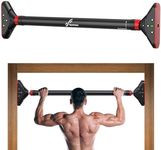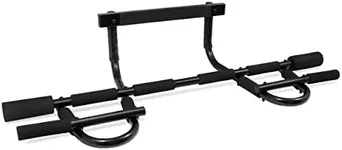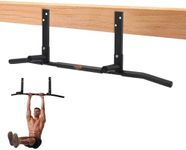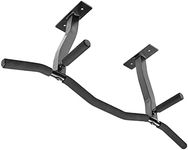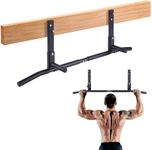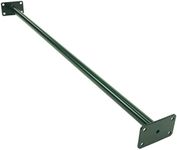Buying Guide for the Best Pullup Bars
Choosing the right pull-up bar can make a big difference in your home workout routine. The best pull-up bar for you depends on your available space, the type of exercises you want to do, and how often you plan to use it. Before buying, think about where you’ll install it, how much weight it needs to support, and whether you want something permanent or portable. Understanding the key features will help you find a pull-up bar that is safe, comfortable, and fits your fitness goals.Mounting TypeThe mounting type refers to how and where the pull-up bar is installed. Common types include doorway, wall-mounted, ceiling-mounted, and free-standing bars. Doorway bars are easy to install and remove, making them great for renters or those with limited space, but they may have lower weight limits. Wall and ceiling-mounted bars are more permanent and stable, suitable for intense workouts and heavier users, but require drilling and more space. Free-standing bars don’t need installation and can be moved around, but they take up more floor space. Choose the mounting type based on your living situation, available space, and how permanent you want the setup to be.
Weight CapacityWeight capacity is the maximum amount of weight the pull-up bar can safely support. This is important for safety and durability. Pull-up bars typically range from supporting around 200 pounds to over 400 pounds. If you plan to use additional weights or if multiple people will use the bar, choose a higher weight capacity. Always pick a bar that can handle your body weight plus any extra load you might add during workouts.
Grip OptionsGrip options refer to the different hand positions the bar allows, such as wide, narrow, or neutral grips. Some bars offer multiple grip positions, which can help target different muscle groups and add variety to your workouts. If you want to do more than basic pull-ups, look for a bar with several grip options. If you’re just starting out or prefer simplicity, a basic straight bar may be enough.
Bar Material and PaddingThe material and padding of the bar affect comfort and durability. Most bars are made from steel for strength, but the quality and thickness can vary. Padding, usually foam or rubber, provides a more comfortable grip and helps prevent slipping. If you plan to do high-repetition workouts or have sensitive hands, look for a bar with good padding. For heavy use, prioritize sturdy materials and secure construction.
Adjustability and SizeAdjustability and size refer to whether the bar can fit different doorways or spaces and if it can be adjusted for height or width. Some doorway bars are adjustable to fit various frame sizes, while free-standing bars may allow height adjustments. Measure your space before buying and make sure the bar will fit comfortably. If multiple people of different heights will use the bar, adjustability can be a helpful feature.
Ease of InstallationEase of installation is about how simple it is to set up the pull-up bar. Some bars require no tools and can be put up or taken down in seconds, while others need drilling and more time to install. If you want a temporary or portable solution, look for a bar that’s easy to install and remove. For a permanent workout area, a more securely mounted bar may be worth the extra effort.

